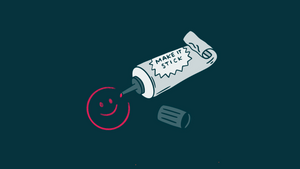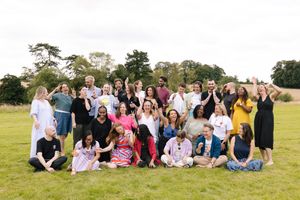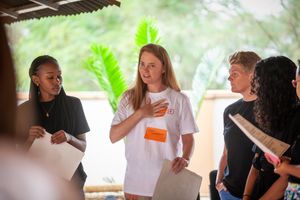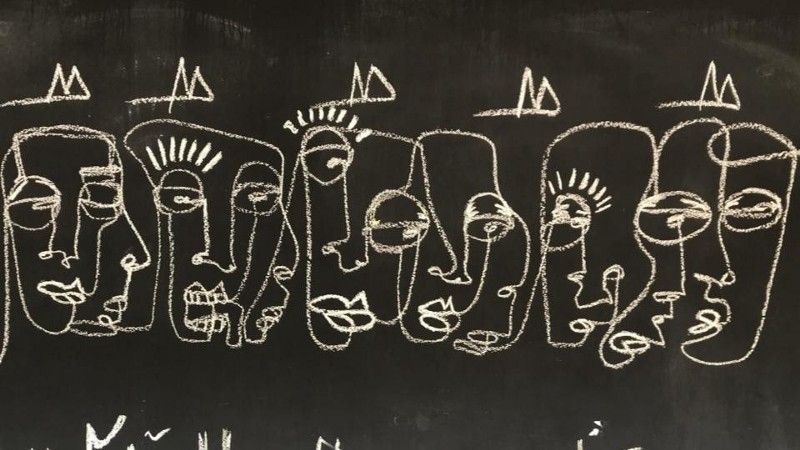
Join us in exploring how to make our work more participatory and contribute to the open Participatory Evidence Playbook
Some years ago, I worked in the UK’s Ministry of Justice bringing user-centred design to policy making. We’d noticed that policies and decisions were often made without much understanding or involvement of the people it would ultimately impact. We hoped by offering user-centred design we could develop better policy and services, and ultimately improve people’s experiences.
For example, when looking to understand what the government could do to reduce the disproportionate representation of Black and Minority Ethnic children in custody, we worked with young people that acted as peer researchers. They conducted interviews with other people who had the lived experience of getting arrested and being interviewed in the police station.
This helped to inform the justice system about how things like distrust and fear affect willingness to accept legal representation, which in turn contributes to disproportionate representation.
This process makes for very different policy recommendations because it is informed by real experiences. It also shifts the power dynamic for those children, at least for a short while, giving them a rare opportunity to shape the system they know so intimately.
“It feels like the beginning of a new era” — one of the young participants of the justice system research work.
For me, this approach is at its best when it’s used to connect those in power with the people in the system, and in return empowering people to influence the system they are in. However, it’s not just about understanding the people affected, it’s about those people actually participating in the process. Turning subjects of research into drivers of change.
At Brink, we’re talking about this as participatory evidence. Thinking about the sustained involvement of people with lived experiences in both generating new evidence, and turning evidence into action.
In writing this blog and inviting people to contribute to an open playbook, I hope to add to important conversations around the topic of participation. To celebrate what is already happening and create space to do even more. I’d love to share how our thinking is evolving so people can see what we are up to at Brink, and join the conversation about how to do this work for real.
The people most impacted by decisions are so often not involved in making them
At Brink, we’re intentionally not dogmatic about a particular methodology but instead think about combinations of approaches that will have the most impact. This often centres around building capability in others, facilitating peer to peer interactions and collective action, and focusing on the humans in a system (we call this Behavioural Innovation).
Recently, we’ve been reflecting on how so much of our work can be inaccessible and elite because of the kinds of people we work with (academics and government aid organisations) and the technical language and jargon that we use (user-centred design, agile, development).
As our co-founder Lea put it: “It’s really easy to lose sight of who we really work for and who we really need to collaborate with.”
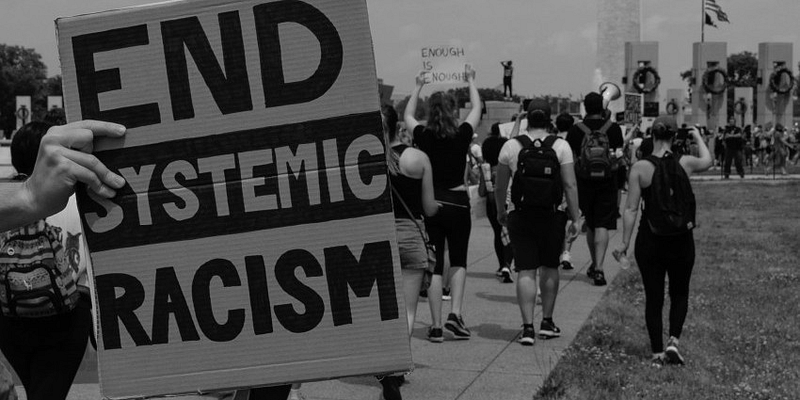
More than ever, we need to push ourselves out of the expert-led dynamic, to a more grounded and inclusive process. Not just being ‘user-centred’ but challenging ourselves to be participatory.
Why? Because we know from research into psychological safety that varied voices reach better results, and through periods of uncertainty the need for diverse voices is increased. We need more people inputting and surfacing those quiet signals that might normally get drowned out.
As the world begins to truly interrogate systemic racism, pushing us to understand the implications of white dominance in our work. We need to make sure we are using our position to enable others and not deepen power dynamics.
A short acknowledgement of what’s already out there
Before I explain what we mean by participatory evidence, I wanted to acknowledge that there are many people talking about this already, in so many different ways, across different disciplines. Our practice is informed by all those who came before us, already pushing us to think in this way.
For example, you can listen to DrJoanna Choukeir on this podcast talk about asset-based community development, and how anyone can participate in social change. You can read here about the need to ‘go beyond empathy’ to include disabled communities in designing solutions.
You can delve into the wonder of the Design Justice Network which focuses on centering those normally marginalised. They have developed a set of principles which are all relevant but particularly:
“5. We see the role of the designer as a facilitator rather than an expert.
6. We believe that everyone is an expert based on their own lived experience, and that we all have unique and brilliant contributions to bring to a design process.”
Crucially, all of these approaches are recognising the need to think through the power in the system, and go from designing for people to with them. I love this overview used by Beyond Sticky Notes of the different types of design and where power is held in them.

I’m taking part in this fantastic book club that’s hosted by States of Change and Kelly Ann, the author of Beyond Sticky Notes discussing how to practice co-design authentically and inclusively.
As Panthea Lee wrote in her epic tweet about what co-creation really means: “don’t call it co-creation unless you’re willing to invest — to really, truly invest — in a process that call’s out and tackles power imbalances”.
What we mean by participatory evidence
You might have heard of participatory design. And that’s definitely part of what we’re talking about, but some of the people we work with don’t consider their work to be ‘design’. At Brink, we’re thinking instead about participation in relation to evidence.
We noticed that we’re involved in both the generation and activation of evidence. Both are needed to create change, and those that are most affected tend to have the least influence on either of them.
Or as the Long Time Project said: “Opportunities to shape the future are not equal… systemic injustice, social inequality and economic hardship affect our ability to influence the future”.
Participatory evidence is about the sustained involvement of people with lived experiences in both generating new evidence, and turning evidence into action.
Many methods and approaches are human-centred but led by experts. These continue to be useful but shouldn’t be an excuse for avoiding the active participation of the right people in our work, the lived-experience experts.
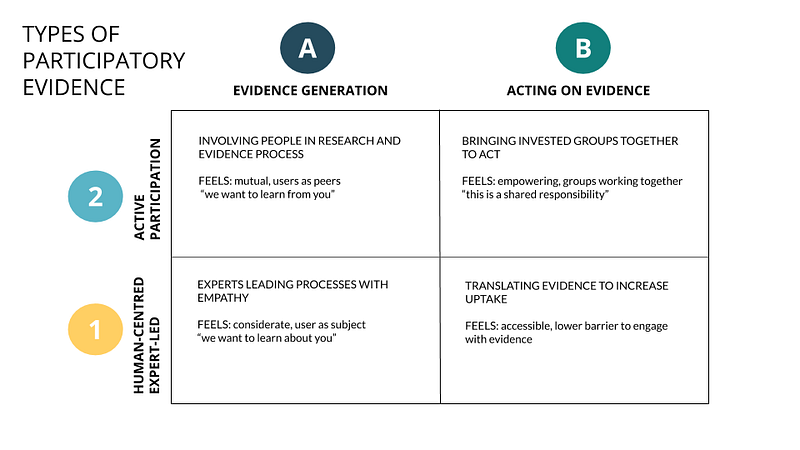
At Brink, we believe it’s about identifying the best approach for the moment, and for the work. Right now we feel that finding ways to be participatory are incredibly important. Not in a way that is tokenistic, but in a way that is sensitive to context and history, and genuinely improves the work.
It’s easy to say this should happen but how do we actually do it? Like so much of our work, we start by asking ourselves some questions:
- Who is most impacted by the social issue, and how are we making sure we involve them?
- Who is usually excluded from this work, and how can we bring those people in?
- What are the usual power dynamics and what can we do to shift them?
- How can we ensure that participation is possible without putting the burden on those groups, be it financial, emotional or other?
- How do we ensure people are valued and recognised for their contributions?
- How will we make sure participation can be sustained?
We know we’re just scratching the surface. That’s why we’ve created an open Google doc with some examples of ways we’re trying to generate and act on evidence with human centred and participatory approaches.

👉 Click here and contribute to The Participatory Evidence Playbook
We’re inviting everyone to contribute, discuss and debate with us — so get stuck in!



